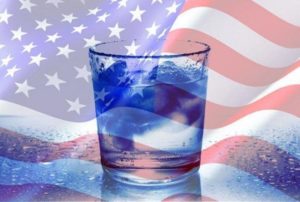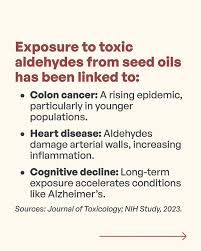In the United States, the legal drinking age has been set at 21 since the passage of the National Minimum Drinking Age Act of 1984. Before that, many states, including Ohio, had lower drinking ages, with some allowing alcohol consumption at 18.
The law was put in place to reduce drunk driving accidents and protect young people’s health; but decades later, the debate continues.
Supporters of the 21+ drinking age argue that the law has helped reduce drunk driving deaths and alcohol-related harm among young people. According to the National Highway Traffic Safety Administration, states that increased their drinking age to 21 saw a 16% decline in alcohol-related crashes.
Yet, others argue that at age18, Americans can vote, join the military, and make other significant life decisions, so why not drink legally? While young adults are trusted with many important responsibilities, the legal drinking age remains the same.
The National Institute of Alcohol and Substance Abuse said the brain continues developing into a person’s mid-20s, and raising the drinking age to 21 has helped prevent alcohol-related harm and health issues.
However, research indicates that many 18-year-olds are already drinking. 60% of them are high school seniors. This is according to a study done from the Centers of Disease Control and Prevention. Their consumption of alcohol suggests that the law may not be fully effective in preventing underage drinking.
In Ohio, the debate over legal age limits does not apply only to alcohol. In 2020, the state raised the minimum age for buying tobacco and vaping products from 18 to 21 in an effort to stop teen nicotine addiction.
Officer Keith Jackson, the school resource officer at Westerville South High school, has seen how underage drinking laws affect students from both the school and community safety standpoint as he was also a patrol officer at one point in his career.
“I think it’s good to have the legal age of 21, but I don’t think that it’s always effective in stopping young people from drinking,” Jackson said. He emphasized the role of businesses in preventing underage alcohol access.
“I think that’s something that individual businesses and stores should probably do a better job at making sure that young people don’t purchase alcohol,” Jackson said.
Data supports Jackson’s concern. For instance, a study published in the Journal of Studies on Alcohol and Drugs found that 68.1% of purchase attempts by minors in certain liquor stores were successful without ID checking or age verification. To prevent underage liquor sales, retailers need to enforce the law by consistently checking IDs.
Officer Jackson didn’t hesitate when asked what the biggest concern about drinking was.
“I think at 16 or 18 teenagers feel like nothing bad is going to happen, and I think that they do drive and the consequences can be as minor as just being pulled over by the police, or it can be as severe as an accident where someone gets seriously injured,” Jackson said.
When asked about trends in underage drinking and impaired driving, Officer Jackson pointed to the influence of ride-sharing services. “I think Uber and things like that have changed the amount of impaired driving that we have; I think people are making better choices with that.”
Jackson emphasized that while some aspects of teen behavior have improved, like choosing safer transportation, the issue of underage drinking remains a concern for law enforcement still.
To understand how these laws and behaviors are looked at from a student’s perspective, a current high school student was interviewed about their views on the legal drinking age and how it affects their peers.
Avery Asmo, a senior at Westerville South High school, about her views on the law and its impact on her peers and community.
“We have the oldest drinking age in the world for alcohol, and I think if someone’s old enough to vote they should be old enough to make their own decisions regarding alcohol use,” Asmo said. “I also think the age should be 18 for purchasing liquor.”
Research shows that countries with a lower legal drinking age, like those where it’s set to 18, tend to have lower drinking rates among children. A study published in the Journal of Public Health found that countries with the legal drinking age of 18 have an average underage drinking rate of 12%.
Whereas, compared to the US, the average underage drinking rate is 20%. This statistic suggests that while the drinking age may impact alcohol consumption, it is just one factor among many influencing young people’s behavior.
When asked if lowering the drinking age would reduce drinking among teenagers, Asmo expressed her thoughts on how it might initially affect them. “I think at the start people would drink a lot more, but eventually it would even out because then you have people making the choices while they’re young and they don’t feel the need to go on benders when they’re 21.”
Her perspective suggests that, while lowering the legal drinking age could start an initial spike in alcohol consumption among 18-year-olds, it may also lead to more responsible drinking habits as young adults mature.
While some high school students have strong opinions about the drinking age, it’s very important to consider the impact of alcohol consumption from a medical standpoint.
To understand the health risk and long-term effects of underage drinking, Bill Knisely, an assistant nurse at the OSU Wexner Medical Center gave an opinion.
“The most common concerns are alcohol poisoning, long-term damage over time like liver damage and stopping brain development, but there’s also injuries from just having impaired judgment.” Knisely said. He outlined that young adults’ brains are still developing until about the age of 25, and drinking heavily can have lasting effects on your brain’s development like stopping growth, stopping developed frontal cortex and more.
When asked on the possibility of lowering the drinking age to 18, he believed it could lead to earlier drinking but also reduced the need of drinking just because it’s restricted. Though he did stress that being educated on what drinking does promotes healthier drinking habits when talking to the youth.
Knisely said, “It’s all about creating environments that encourage responsible drinking. Health issues can arise when young adults drink irresponsibly in settings where they are unsupervised and no adults are around.”
Lastly, Knisely stressed that drinking heavily at a young age can cause lasting damage so it’s important to understand the risk and to drink responsibility.
Opponents, however, believe that legal drinking at 18, like in many other countries, could lead to more responsible habits rather than secretive, unsafe drinking.
As the law stands, Ohio remains firm in keeping the drinking age at 21, just as it has done with tobacco and vaping products.









